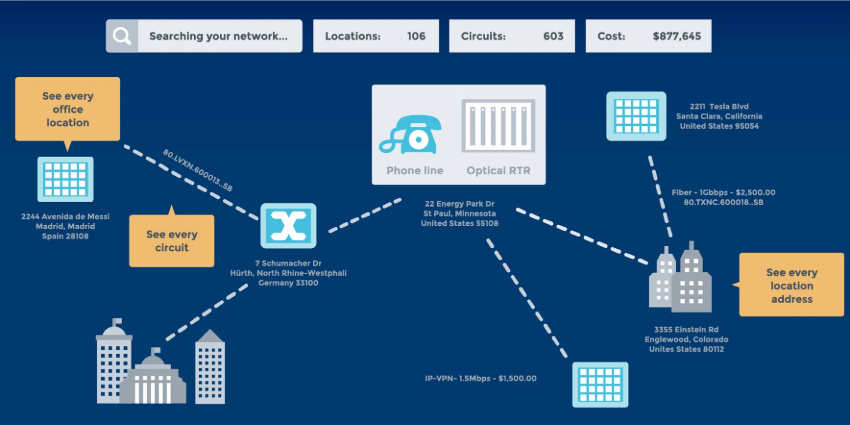Building a reliable communication stack isn’t just about finding the right combination of software and hardware for your end users. As the marketplace continues to evolve, companies also need access to an easy provisioning strategy that ensures they’re able to adopt the latest tools fast.
For years, companies have struggled to deliver on this part of the purchasing roadmap. Provisioning and service management have often been a time-consuming and complicated process. Unfortunately, this led to stress and downtime for companies that wanted to update their offerings with new tools and communication solutions. Finally, however, things are starting to change. Industry leaders in the world of telephony-based IoT services and software development, Swoop Datacom, are masters in the service management industry.
The creators of the ForgeServe multi-tier IP provisioning and service management platform, Swoop Datacom has changed the way their users think about provisioning. The ForgeServe platform delivers a robust, scalable, and reliable service for managing and provisioning IP endpoints, ATAs, and more. I spoke to John Bennett of Swoop Datacom to find out more about their approach to the provisioning process.
When Did the Demand for Service Management Start?

John’s rich background in the service management and device provisioning industry makes him an excellent person to comment on the evolution of the marketplace. Bennett told me that Swoop Datacom has been in the provisioning industry for years now, from the days when it was all about provisioning devices based on the PBX.
“When cloud emerged on the market, we’d need to use some proprietary tech in the network to connect to the PBX. However, there are now about 25 different handset manufacturers out there, all with their own ideas of how provisioning should work.”
John told me that the cloud means that there are a lot more issues to deal with in provisioning and service management than there used to be. Deploying phones now means adding even more stages to the provisioning cycle, which is a step backward for the companies that need to become more agile. “We thought it was time to create a solution that would make provisioning simpler. We could see that customers were struggling with this issue from a very early stage. We decided to create a product that would fill the gap across the new multi-vendor environment, giving customers access to real SIP flexibility and cloud products.”
What Are the trends You’re Noticing in the Service Management Space?
The ForgeServe solution by Swoop Datacom has made the company an innovator in the delivery of robust and scalable provisioning solutions. The zero-touch approach to provisioning helps sellers to migrate customer easily to different companies and track assets too. I was interested to find out whether Swoop’s position in the marketplace gave them any unique insights into today’s trends.
Bennett told me that people are getting used to the subscription-based model for accessing the tools they need. Swoop Datacom is there to make sure that the “device as a service” model really works, no matter what service or endpoint you’re using.
“There’s a lot to think about when bringing new devices into an enterprise environment. Companies need to ensure that everything communicates and works together properly. You don’t want crucial features being missed out when you’re combining different vendors and services.”
John noted that today’s companies don’t want to be restricted to working with a specific vendor or portfolio of devices. Instead, organisations are looking for solutions that just work naturally together in the same unified environment. “Companies are looking for a multi-vendor and open-stack approach to their endpoints and services. A while ago, you would buy a PBX because of its features. Now, vendors are catching up with each other, and features are very similar.”
John believes that the change in the marketplace means that people are now buying products based on which vendors they feel most comfortable and familiar with.
“A multi-vendor estate where people can choose the solutions that suit their needs and budget is where the market is going now”
How Is Swoop Trying to Serve the Market?
Swoop Datacom makes sure that companies can access the IP endpoints and cloud solutions that they want, without having to compromise or stick to one specific vendor. As companies continue to look for more diverse and distributed solutions for their communication stack, freedom and flexibility is critical. “Talking to the wider environment is another thing we’re focusing on too. We want to make sure that different devices and PBX can all communicate in the same environment.”
Bennett told me that companies of all sizes are beginning to rapidly adopt cloud solutions in a range of different environments. From a vertical perspective, one of Swoop’s biggest customer bases is in the service provider space. These are the people who most want to get devices out quickly and make sure that they can roll out new solutions as soon as possible.
“There’s a lot happening out there with mid-market companies like Avaya and Mitel, and enterprise companies like Microsoft and Cisco.” For Swoop Datacom, the future of service management and provisioning is all about freedom, diversity, and flexibility, moving from the proprietary strategy to the open SIP standard.
What’s Next for the Service Management and UC Market?
Finally, I asked John what he believes is coming next for the Service Management and UC marketplace. He told me that Swoop Datacom started investing in service management solutions back in 2015 – before people knew how valuable they were. “Not everyone was sure if a service management wrap was necessary. Now, we can see a lot of other vendors mimicking our offering as people begin to recognise the benefits.”
According to Bennett, today’s customers are seeing service management solutions and provisioning from a new perspective. It’s not just about rolling tools out quickly anymore but giving people everything they need to manage those devices and solutions, from monitoring to device analytics and more.
“I think there’s going to be a lot of changes going forward in the way that people decide how they’re going to make certain purchases. I think there will be some consolidation of existing legacy deployments and traditional tools too.”
“Everyone’s trying to make the right move from legacy to cloud to provide the best solutions for their customers”







